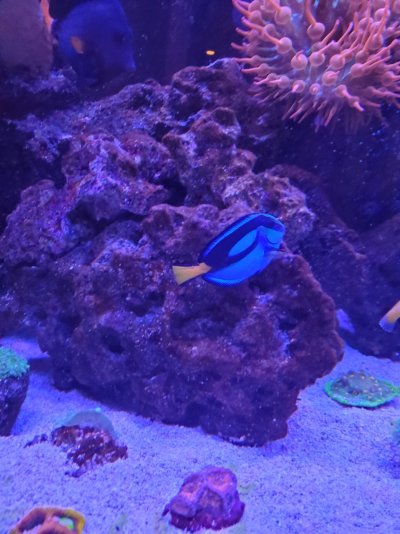So glad to have a place to ask questions.
My tangs seem to have black ick. I understand that 2 doses of PraziPro, 7 days apart is the treatment protocol . My questions are can I/should I treat in the display tank? Will prazi harm my mushrooms, pistol and cleaner shrimp, snails and crabs? What is the lifecycle of the worm? Might I have eggs in the DT that other fish may attract.
Background-
The tank is 140 gallons that is 10 months old. Temp range is 77.5-78.4. pH is 8-8.4, Nitrates are at 9.8, and Phos is at .05.
We had an out break of ick/velvet on Aug 13 2022 and QT ed and treated all fish in copper, general cure, metro. We lost all but 3 fish. The tank was fallow for 81 days.
New fish were bought online and sold as quarantined fish. the protocol was 2 weeks in copper 1.75-2.25., moved to new tank, prazipro and metro every 3 to 5 days, and feed bendazole with metro, for 2 more weeks.
Once they arrived I observed them for 7 more days in a QT tank. They have been in the DT for 30 days. All inverts and corals have been qt ed for 45 days.
Stock List- Purple tang, Powder Blue, Hippo, Blue Eyed kole (all have slightly bumpy spots). Wrasse McCosker, orange shoulder, Yellow coris (damaged scales). 2 shotgun clowns, Gobies, yellow watchman, sand sifting, aptisia eating file fish. 2 cleaner shrimp, 1 pistol, 2 conch, 2 emerald crabs, 3 types of snails.
I would like to treat in the tank because our last fallow period was a nightmare. What am I risking?

My tangs seem to have black ick. I understand that 2 doses of PraziPro, 7 days apart is the treatment protocol . My questions are can I/should I treat in the display tank? Will prazi harm my mushrooms, pistol and cleaner shrimp, snails and crabs? What is the lifecycle of the worm? Might I have eggs in the DT that other fish may attract.
Background-
The tank is 140 gallons that is 10 months old. Temp range is 77.5-78.4. pH is 8-8.4, Nitrates are at 9.8, and Phos is at .05.
We had an out break of ick/velvet on Aug 13 2022 and QT ed and treated all fish in copper, general cure, metro. We lost all but 3 fish. The tank was fallow for 81 days.
New fish were bought online and sold as quarantined fish. the protocol was 2 weeks in copper 1.75-2.25., moved to new tank, prazipro and metro every 3 to 5 days, and feed bendazole with metro, for 2 more weeks.
Once they arrived I observed them for 7 more days in a QT tank. They have been in the DT for 30 days. All inverts and corals have been qt ed for 45 days.
Stock List- Purple tang, Powder Blue, Hippo, Blue Eyed kole (all have slightly bumpy spots). Wrasse McCosker, orange shoulder, Yellow coris (damaged scales). 2 shotgun clowns, Gobies, yellow watchman, sand sifting, aptisia eating file fish. 2 cleaner shrimp, 1 pistol, 2 conch, 2 emerald crabs, 3 types of snails.
I would like to treat in the tank because our last fallow period was a nightmare. What am I risking?

















